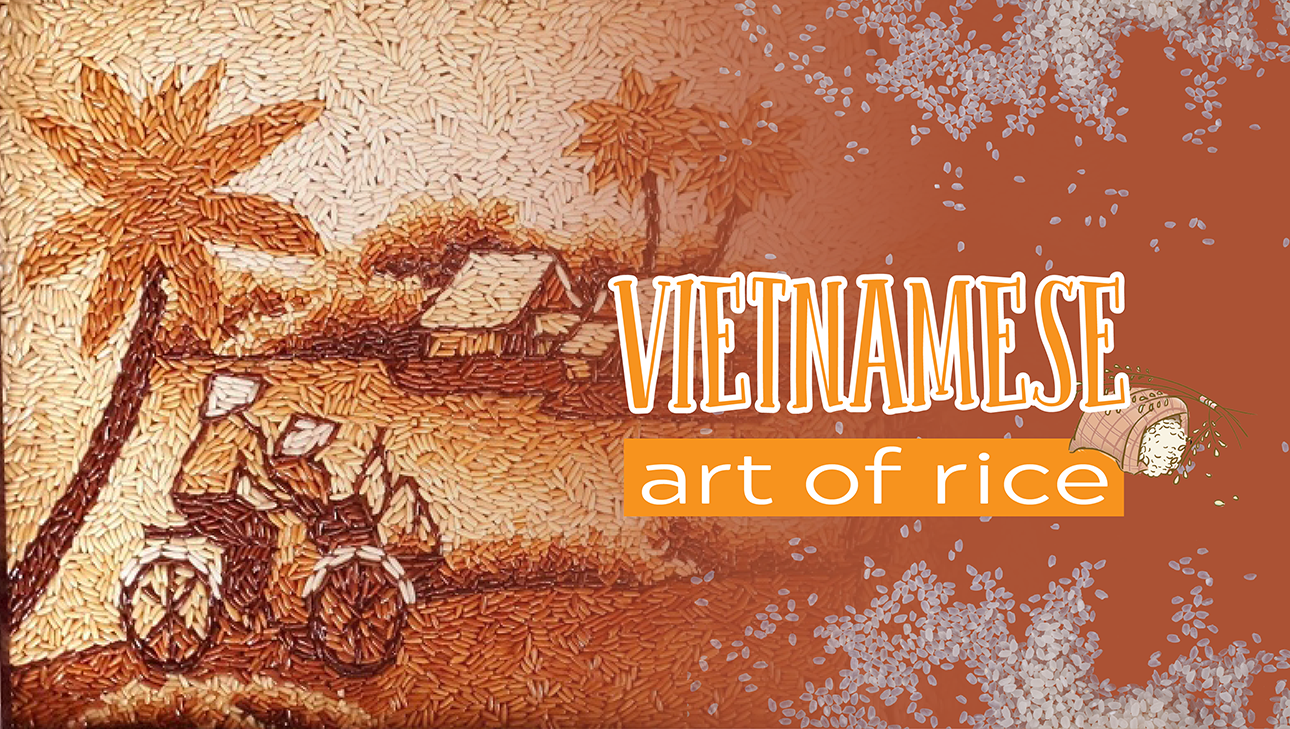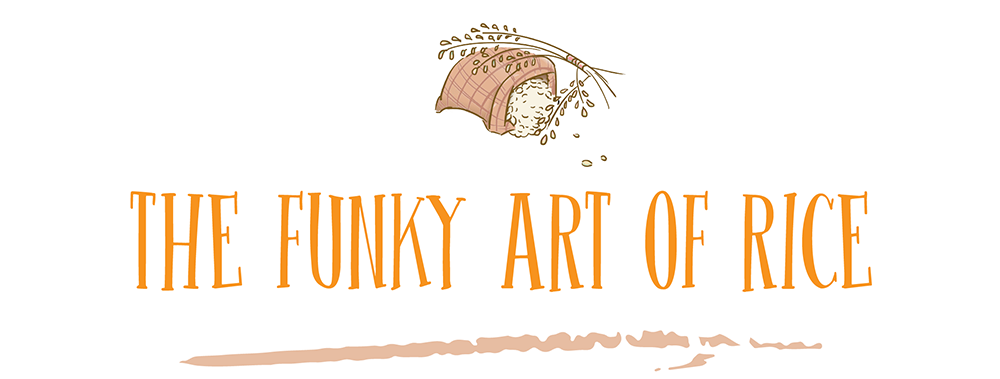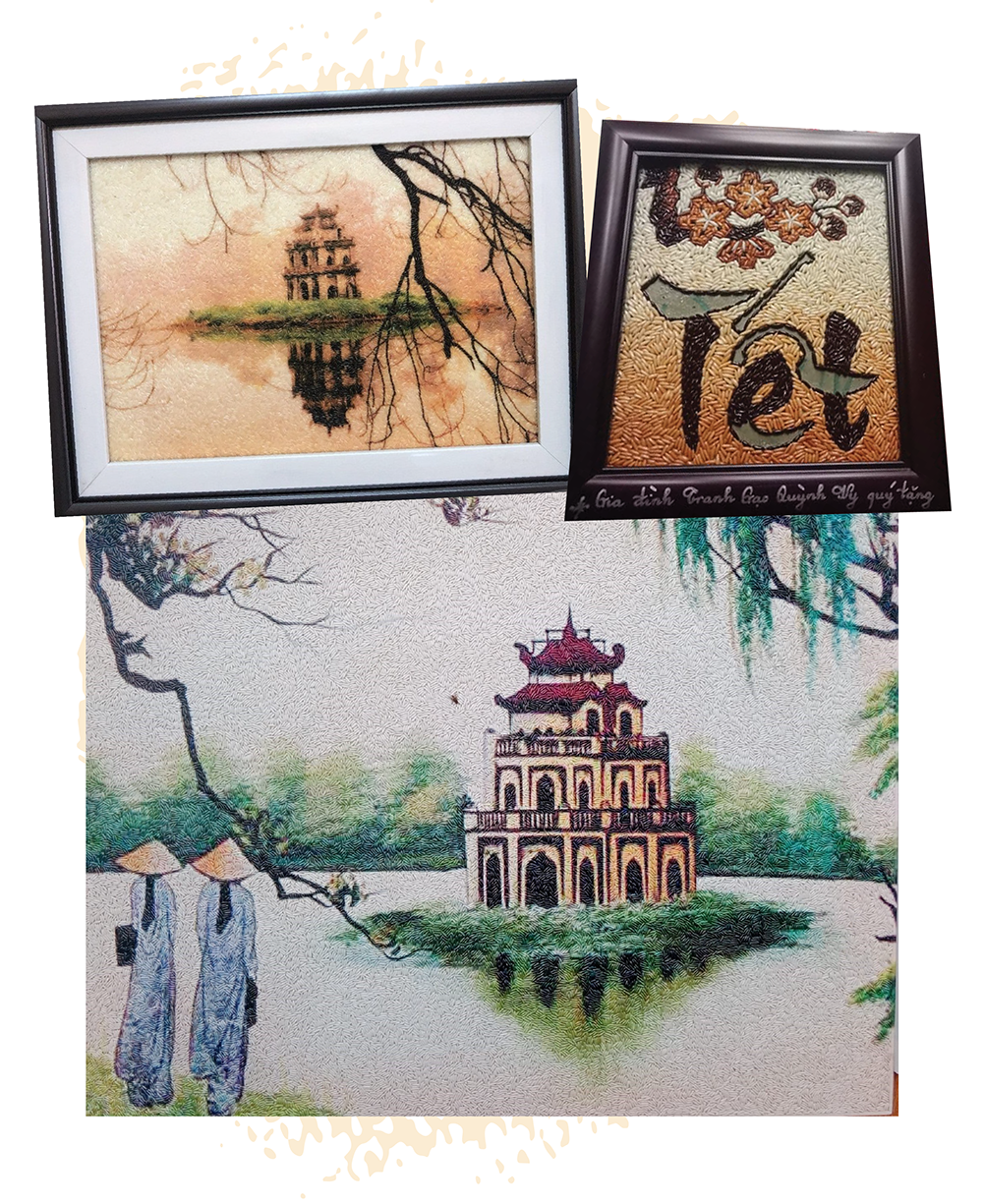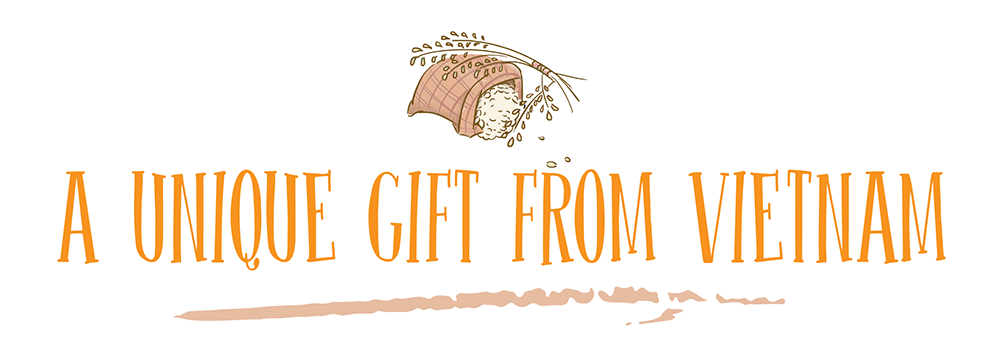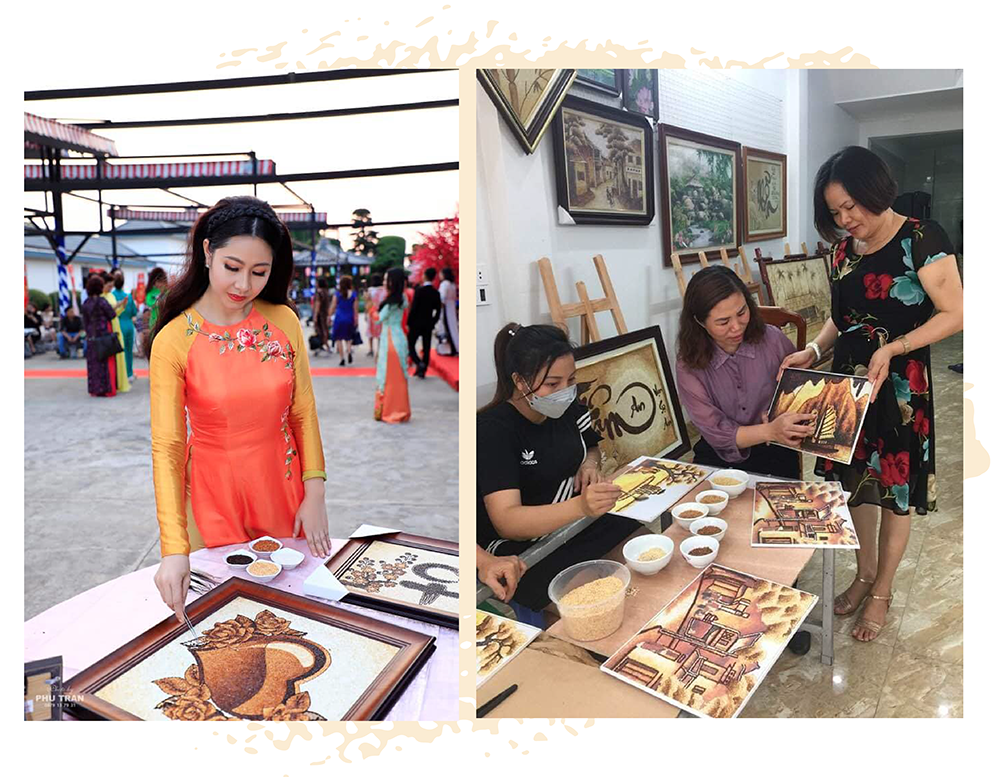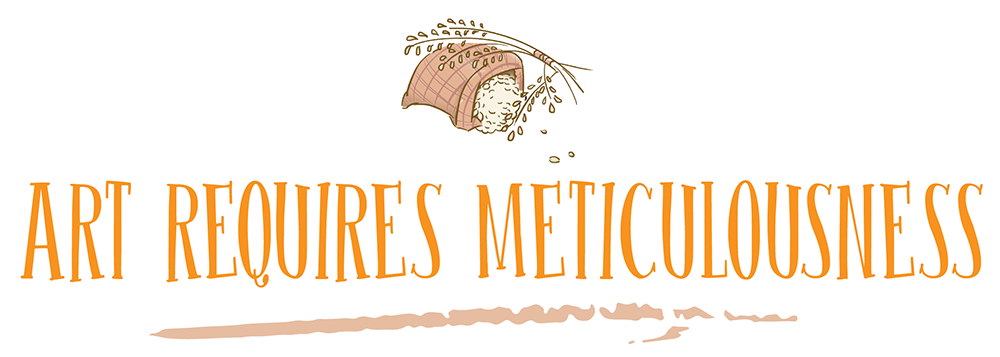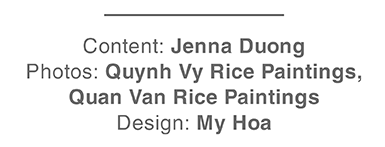Vietnam is undoubtedly a rice country. It’s a key part of people’s diet, eaten twice a day on most days as a staple for breakfast, lunch or dinner or even as a snack. As a testament to its importance, rice is even used in a new type of artwork - rice painting.
Given their uniqueness, such paintings have become quite fashionable among art aficionados. The materials and details in the paintings are all made of rice.
Artists must be meticulous in selecting the type of rice and then roast or dry it to create different color shades. It is believed that the natural colors of roasted rice are rich and lively and last far longer than most other materials.
Rice paintings are believed to first appear in India and took off in tourist attractions like Hanoi, Ho Chi Minh City, Hoi An, and Dalat around 2010.
It was not long before rice painting gained fame. Instead of being just another souvenir to take home, they became something special from Vietnam.
The most favorite gifts for guests on special occasions, such as APEC meetings in Vietnam (2017), ASEAN Summit (2020), and others, are the paintings made by Vietnamese artisans from Quynh Vy Rice Paintings (Ho Chi Minh City).
“The typical images of Vietnam on rice paintings have received countless compliments from overseas Vietnamese and international tourists,” said artist Dang Khoa, creator of the Quynh Vy Rice Paintings.
He also opened rice painting classes for foreigners and popularized this painting in local schools.
The rising popularity of rice paintings is also helped by tourists who value the artworks as souvenirs. According to rice painter Nguyen Thi Van from Phu Lo Commune, Soc Son District, on the outskirts of Hanoi, many foreign tourists look for reasonable souvenirs that evoke their memories of Vietnam.
She is said to be one of the few rice painters in Hanoi. Van’s first rice painting was completed in 2015. In 2016, the former preschool teacher became a rice painter and opened her gallery.
“They buy these paintings to decorate their homes thanks to Vietnamese style and at a fair price,” she said.
Alan Smith, a tourist to Hanoi, said he found rice painting interesting.
"Although rice painting does not have the collector value of oil, lacquer, or silk art, it still has its place in the market. The special feature of the painting lies in its chic and unique material, which can only be found in Southeast Asia," he told The Hanoi Times.
Turning rice into art, Van said, is an interesting way to promote Vietnam's rice exports, as Vietnam is the third largest rice exporter in 2022 after India and Thailand and the seventh largest rice consumer.
“Not only is rice advertised as a food item, but also as a work of art,” she believed. “People around the world would see and admire Vietnam’s wet-rice culture,” she stated.
Soon after opening her first gallery called “Quan Van Rice Paintings” in her hometown in 2016, Van quickly commercialized her unique artworks.
Van’s rice paintings soon won the hearts of domestic and international tourists. They became more interested in the materials and were impressed by how she expressed her ideas in classical and modern styles.
In 2021, Quan Van’s rice painting was recognized as a 4-star OCOP (One Commune - One Product) product of Hanoi.
According to Nguyen Thi Van, rice painting is not an overly painful undertaking but requires time and patience.
“For a beautiful rice painting, artisans must be diligent, meticulous, and have a passionate spirit of creativity,” she said.
The material of Van’s rice paintings is jasmine rice, which is widely grown in the Mekong Delta in southern Vietnam.
“The long and beautiful shapes of the rice can help artisans to arrange them more easily, while its quality will help the painting to have a longer life,” she added.
To color the rice paintings, Van chooses to roast the rice. For the ivory color, the painter has to roast the rice over low heat for around 30 minutes. Similarly, rice needs to be roasted for six hours or more to get a dark brown color.
After many rice roasting trials, Van can create 42 colors for her grains.
The molding process for rice paintings is no less elaborate. After sketching a painting on a wooden block comes the important task of sticking the tiny rice grains on with a special type of glue. Each grain is carefully chosen and arranged to make full use of the desired effects of light and shade, giving the finished work an almost 3D look.
A professional artist will take three days to complete a 30x30cm painting and almost ten days for a larger one of 80x100cm.
There are three types of rice chosen as materials, of which regular rice is chosen for thin details, sticky rice for large, wide details, and broken rice for small details and smooth paintings. Each painting contains hundreds or thousands or even tens of thousands of rice grains.
Rice paintings traditionally feature three main colors: black, white and brown, with 42 other shades, such as pale ivory and yellow. The subjects of the paintings can be quite diverse, ranging from calligraphy, landscapes, animals, and flowers to religious scenes and portraits.
The paintings are also an inexpensive alternative to the gemstone or hand-embroidered paintings. Each rice painting costs from hundreds of thousands to millions of Vietnamese dong, depending on the sophistication of the painting and the skill of the artist.
Each artwork is handmade and unique, as it comes directly from the artist's heart and soul. Completed rice paintings must pass through various steps, from selecting materials, roasting the rice, grafting the rice and protecting the picture with a chemical coating.

